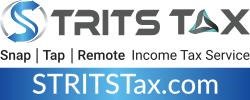Introduction
If you are registered for sales and use tax purposes in New York State, you must file sales and use tax returns. This bulletin explains the sales tax filing requirements for quarterly, part-quarterly (monthly), and annual filers, including the E-file mandate. If you aren’t sure whether you need to register for sales tax purposes, see Tax Bulletin Do I Need to Register for Sales Tax? (TB-ST-175), Check out this Quick Reference Guide for Taxable and Exempt Property and Services.
E-file mandate
Sales tax vendors must Web file their sales tax returns if they meet all three of the following conditions:
- prepare tax documents themselves, without the assistance of a tax professional;
- use a computer to prepare, document or calculate the required filings, or are subject to the corporation tax e-file mandate; and
- have broadband internet access.
You can Web File all sales tax returns and schedules, including:
- monthly, quarterly, and annual sales tax returns
- PrompTax filers submitting Form ST-810
- no-tax-due, amended, and final returns
- Form ST-330, Sales Tax Record of Advance Payment
- Form AU-11, Application for Credit or Refund of Sales or Use Tax
You will need to complete a one-time registration process before you can Web File. See Sales Tax Web File for more information.
Your sales and use tax return
Your sales and use tax return is a summary of your business activity, including:
- gross sales;
- nontaxable and exempt sales;
- taxable sales;
- purchases or uses subject to tax;
- credits you are claiming on the return;
- sales tax, use tax, and any special taxes you collected or were required to collect; and
- current information regarding your business.
How frequently you must file sales tax returns depends on the amount of your taxable sales (and purchases subject to use tax), or the amount of tax due. Even if your business did not make any taxable sales or purchases during the reporting period, you must file your sales and use tax return by the due date.
The chart below summarizes which sales tax form to file. The forms and schedules are further explained on the following pages of this bulletin and in the links provided.
| You will file: | Form and schedules | Filing period |
|---|---|---|
A quarterly return if:
(Most vendors file quarterly when they first register to collect sales tax.) |
ST-100, New York State and Local Quarterly Sales and Use Tax Return | March 1 through May 31;
June 1 through August 31; September 1 through November 30; and December 1 through February 28/29. |
| You will file: | Form and schedules | Filing period |
|---|---|---|
| An annual return if you owe $3,000 or less in tax during an annual filing period. | ST-101, New York State and Local Annual Sales and Use Tax Return | March 1 through February 28/29. |
| You will file: | Form and schedules | Filing period |
|---|---|---|
A part-quarterly (monthly) return beginning with the first month of the next sales tax quarter if you file an annual or quarterly sales tax return and:
|
ST-809, New York State and Local Sales and Use Tax Return for Part-Quarterly Filers
ST-810, New York State and Local Quarterly Sales and Use Tax Return for Part-Quarterly Filers |
Monthly |
PrompTax
PrompTax is an electronic filing and payment program that’s mandatory for certain businesses. The Tax Department notifies you by mail if you are required to participate. PrompTax is a statutory program that requires large sales tax vendors (generally with an annual sales and use tax liabilities greater than $500,000) to:
- pay tax electronically following a special accelerated payment schedule; and
- file a quarterly sales and use tax return that reconciles all payments for the previous fiscal quarter.
See PrompTax for more information.
How your filing frequency is initially determined
Annual filing
You will automatically be classified as an annual filer when you register for sales tax if you:
- indicate that you do not expect to pay or collect any sales or use tax (for example, you are registering to accept exemption certificates), and
- describe your primary business activity as manufacturer or wholesaler.
The annual return, Form ST-101, New York State and Local Annual Sales and Use Tax Return, covers the period March 1 through February 28/29. Since sales tax returns are generally due within 20 days after the end of the reporting period, annual returns are due by March 20 each year.
Quarterly filing
If you do not qualify to file annually, you will be classified as a quarterly filer when you first register for sales tax purposes.
- The reporting periods covered by quarterly returns are March 1 through May 31, June 1 through August 31, September 1 through November 30, and December 1 through February 28/29.
- Quarterly returns are due no later than 20 days after the end of the quarter to which they relate.
Your filing frequency may change
Your filing frequency may change over time, depending on the amount of your taxable sales or tax due. When your filing frequency changes, the correct return will automatically be available when you Web File.
Quarterly to annual – If you are a quarterly filer, and your total tax due for the four most recently filed quarterly periods is $3,000 or less, the Tax Department may reclassify you as an annual filer. The Tax Department will notify you of the change.
Annual to quarterly – If you are currently an annual filer, and during your annual filing period, your total sales and use tax due exceeds $3,000, the Tax Department may reclassify you as a quarterly filer. The change to quarterly filing takes effect the sales tax quarter following the annual period in which your total sales and use tax exceeds $3,000. The Tax Department will notify you of the change.
Quarterly to part-quarterly (monthly) – If the combined amount of your taxable sales (and purchases subject to use tax) during any quarter is $300,000 or more, you must begin filing monthly returns. The change to monthly filing status takes effect the first month following the sales tax quarter in which your taxable transactions equaled or exceeded $300,000. The Tax Department will notify you of the change.
You must continue to file returns monthly until your taxable sales are less than $300,000 each quarter for four consecutive quarters. At that time, you may contact the Tax Department to request a change to quarterly filing status.
Note: if you are a motor fuel or diesel motor fuel distributor under Article 12-A, and you have sold a total of 100,000 gallons or more of motor fuel or diesel motor fuel (taxable or nontaxable), you must file monthly returns beginning with the first month of the next sales tax quarter. You must continue to file returns monthly until your sales of petroleum products total less than 100,000 gallons for four consecutive quarters, at which time you may contact the Tax Department to request a change to quarterly filing status.
Other forms you may have to file
In addition to filing the main return, you may be required to complete one or more schedules that are used to report certain transactions. Schedules A, B, CW, FR, H, N, P, T, and W must be filed with your return under certain conditions, as described below:
- Use Schedule A to report tax and taxable receipts from sales of food and drink (restaurant meals, takeout, etc.) and from hotel/motel room occupancy in Nassau or Niagara County, as well as admissions, club dues, and cabaret charges in Niagara County.
- Use Schedule B if you: (1) provide nonresidential utility services in certain counties where school districts or cities impose tax, (2) provide residential energy sources and services subject to local taxes, (3) are a vendor supplying the above services or are billing tenants on a sub-metering basis, or (4) purchased any of the above without payment of sales tax (under direct payment permits, exempt purchase certificates, or otherwise). (For a list of residential rates, see Publication 718-R, Local Sales and Use Tax Rates On Residential Energy Sources and Services.)
- Use Schedule CW to provide information about credits you claimed against your taxable sales or purchases subject to use tax, if you are not subject to the E-file mandate (i.e., use only if filing a paper return).
- Use Schedule FR if you make retail sales of qualified motor fuel or highway diesel motor fuel or if you are reporting use tax on your use of qualified motor fuel or highway diesel fuel taken from inventory (see Publication 718-F, Local Sales and Use Tax Rates on Qualified Motor Fuel, Highway Diesel Motor Fuel, and B20 Biodiesel).
- Use Schedule H if you make retail sales of clothing and footwear eligible for exemption from New York State and some local sales and use tax (see Publication 718-C, Local Sales and Use Tax Rates on Clothing and Footwear).
- Use Schedule N if you provide certain services subject to sales tax in New York City, see Tax Bulletin Miscellaneous Personal Services and Related Sales in New York City (TB-ST-575). In addition, use Schedule N-ATT if you are a provider of parking services in New York City.
- Use Schedule P if you are a vendor registered to make PrompTax payments of sales and use tax and you are not subject to the E-file mandate (i.e., you file paper returns).
- Use Schedule T to report the sales tax due on telephone services, telephone answering services, and telegraph services within certain counties, school districts, and cities.
- Use Schedule W if you made purchases eligible for the Qualified Empire Zone Enterprise (QEZE) sales and use tax credit. For more information in determining if you meet the qualifications, see Quarterly Schedule W Instructions.
See our Sales Tax Web File for more information.
When to file
Sales tax returns generally must be filed no later than 20 days after the end of the period to which they relate. If you do not file your return and pay any tax due on or before the due date, you will be subject to penalties and interest.
Penalties and interest for failure to file and pay tax
If you file your return late, don’t pay the full amount due, or both, you owe penalty and interest, and cannot claim a vendor collection credit (see Tax Bulletin Vendor Collection Credit (TB-ST-925). Penalty and interest are calculated on the amount of taxes due. The minimum penalty for late filing is $50, even if no tax is due for the reporting period.
Interest is due on any amount not paid when due and accrues from the due date of the return to the date the tax is paid. Interest is compounded daily, and the rate may be adjusted quarterly. You can use the online Penalty and Interest Calculator to determine the amount of penalty and interest due. In addition, various civil and criminal penalties may apply if you do not comply with your responsibilities to collect and remit sales tax (see Tax Bulletin Sales and Use Tax Penalties (TB-ST-805)).
Note: A Tax Bulletin is an informational document designed to provide general guidance in simplified language on a topic of interest to taxpayers. It is accurate as of the date issued. However, taxpayers should be aware that subsequent changes in the Tax Law or its interpretation may affect the accuracy of a Tax Bulletin. The information provided in this document does not cover every situation and is not intended to replace the law or change its meaning.
Reference URL: NYS Tax

